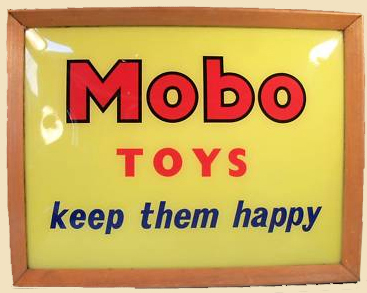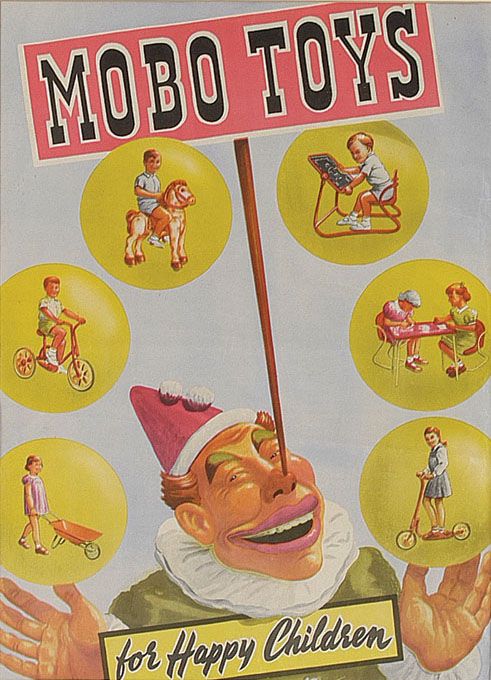We are big fans of Mobo toys, especially the pressed steel rocking horses and scooters, toys made to last. We decided we needed to do some research and uncovered such a fascinating story of innovation and industrial evolution through the 20th Century.
Mobo started its journey with David Sebel a Russian who emigrated to England at the beginning of the 20th Century, and set up in partnership as a wheelwright in East London. The business was successful and as they grew, they expanded into architectural metalwork and related engineering projects, producing street cleaning carts, milk churns and fronts for Cinemas. In the early thirties David’s son Harry joined the firm and it transformed into a fully-fledged family business.
When the second world war broke out, like many innovative manufacturers they threw their hat in the ring to support the war effort converting much of their resource to producing parts and components for military equipment, bunk beds for air raid shelters, aircraft and tank components and so on. It was an extraordinary time as the industrial race went into full swing to supply the war effort. Strange interjection here, but my father was too old for active duty in WW2 but as an experienced businessman was put in charge of the effort to recycle as much steel and aluminium as possible, and in fact drove the recycling of soft zinc toothpaste tubes!

After the war, Harry was the main driver of the business and realised that he needed to expand into new markets to feed their growing manufacturing capability that they had so successfully built as part of the war effort. Harry decided to split the business between the production of toys and furniture. The war effort combined with the renowned Bauhaus school had shone a light on the use of steel tubing in the production of furniture and Harry threw his hat in the ring, registering the trade name Stak-a-Bye, a clever name recognising that the future lay in stackable furniture. Alongside the development of the furniture business Mobo continued the developed of their toy business and Harry pioneered a new level and quality of British made toys. Manufacturing techniques developed in the war helped fuel an innovative ‘ride on’ Bronco horse powered by a quite sophisticated mechanism based on bicycle gears. The mechanism took a number of years to fully develop and was patented; the prototype clay body was sculpted by the RA artist Charles Morewood. The genius behind their toys was the mobility, ride on horses used the child’s body movements to mechanically power the toy horse along, pushing up and down on the stirrups propelled the horse. Mobo was famous for quality steel toys, including prams, bicycles, merry go round, a rocker swing to name a few. Their ‘Toy toise’ a moving tortoise, walking spaniel and snail were all classic Mobo creations.



Mobo grew very quickly and was extremely successful, exporting all over the world but especially to the US, Australia and South Africa. In the late forties their exports to the US accounted for more than half of all UK toy exports. Personally, I find it fascinating that so soon after a war they were able to develop that level of British manufacturing, and sadly how we have lost that skillset both in manufacturing but also in quality of product, I bemoan the sea of imported plastic toys.
As the Australian market grew Mobo set up manufacturing in Australia which ultimately led the family to emigrate there in the 1950’s. In the late fifties, seeing the future threat from imported toys they invested heavily in furniture production under the brand name Sebel, perhaps best known for the Stak a Bye chair which shared many of the pressed steel manufacturing techniques developed during their toy manufacturing years.



Harry was an engineering genius, and in 1974, he transformed seating by becoming the first manufacturer in the world to produce a monobloc plastic moulded chair known as the Integra, which won the Australian design award in 1977. The chair is still widely used today and has never been out of production.Sebel still exists as a furniture brand, still manufacturing in Australia. Harry’s secret? Clever design, solid engineering and quality materials all the way.
Sadly, Mobo no longer exists, it was bought and amalgamated and eventually ceased production. So there you have it, a little insight into a ‘famous’ maker that dominated the post-war toy industry.
With thanks to:

